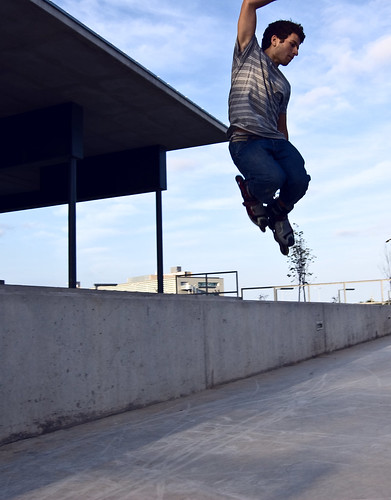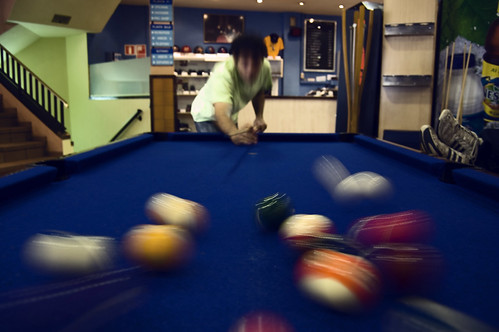In my last article I mentioned how tweaking every setting to get the correct exposure had it's pros and cons. The first setting we're going to take a look at is Shutter speed.
The Shutter speed is the amount of time that the camera's sensor is exposed to light.
This simple setting has a great impact on the end result of the photograph. Using a fast shutter speed will freeze the moment, while a sl ow one will capture motion in the shot.
ow one will capture motion in the shot.
Keeping this in mind is very important because we will need to change this setting often depending on the type of photography we're doing. A classic example for this is sports photography. At sports events we're often photographying fast moving subjects, so we will need to set a fast shutter speed to capture the moment.
Sometimes though we will want the photograph to show the m ovement in the scene. Using a slow shutter speed moving objects will be blurred giving the viewer a sense of speed.
ovement in the scene. Using a slow shutter speed moving objects will be blurred giving the viewer a sense of speed.
The problem with slow shutter speeds is that it's difficult to hold the camera completely still, so at certain speeds the whole photography will become blurred.
Sometimes we will need to use a slow shutter speed because there isn't enough light available even when rising the ISO and aperture. When this is the case it is very useful to use a tripod that will allow us to have the camera completely still during the exposure of the shot. Using a tripod will also allow us to use very long shutter speed to create interesting effects like light or star trails, which we will talk about in further articles.
camera completely still during the exposure of the shot. Using a tripod will also allow us to use very long shutter speed to create interesting effects like light or star trails, which we will talk about in further articles.
The Shutter speed is the amount of time that the camera's sensor is exposed to light.
This simple setting has a great impact on the end result of the photograph. Using a fast shutter speed will freeze the moment, while a sl
 ow one will capture motion in the shot.
ow one will capture motion in the shot.Keeping this in mind is very important because we will need to change this setting often depending on the type of photography we're doing. A classic example for this is sports photography. At sports events we're often photographying fast moving subjects, so we will need to set a fast shutter speed to capture the moment.
Sometimes though we will want the photograph to show the m
 ovement in the scene. Using a slow shutter speed moving objects will be blurred giving the viewer a sense of speed.
ovement in the scene. Using a slow shutter speed moving objects will be blurred giving the viewer a sense of speed.The problem with slow shutter speeds is that it's difficult to hold the camera completely still, so at certain speeds the whole photography will become blurred.
Sometimes we will need to use a slow shutter speed because there isn't enough light available even when rising the ISO and aperture. When this is the case it is very useful to use a tripod that will allow us to have the
 camera completely still during the exposure of the shot. Using a tripod will also allow us to use very long shutter speed to create interesting effects like light or star trails, which we will talk about in further articles.
camera completely still during the exposure of the shot. Using a tripod will also allow us to use very long shutter speed to create interesting effects like light or star trails, which we will talk about in further articles.
No comments:
Post a Comment